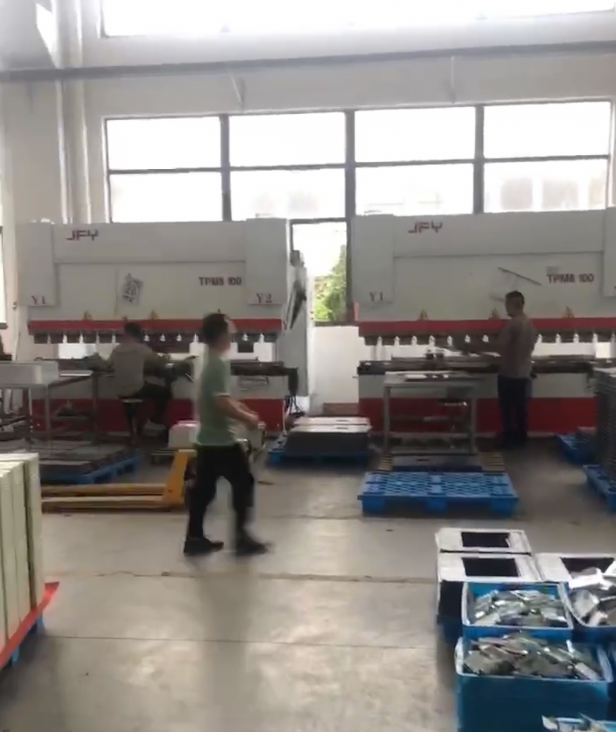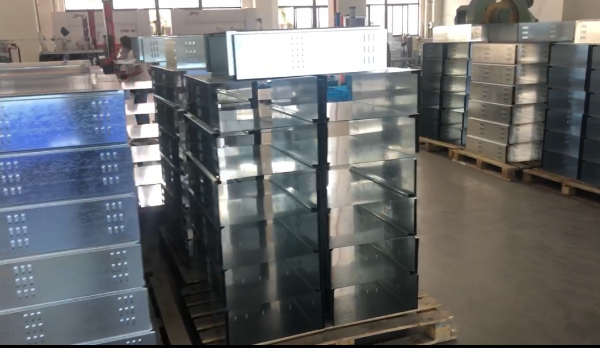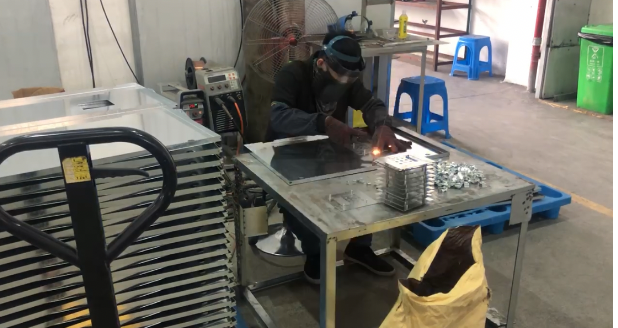By Andy from Baiyear factory
Upated November 1, 2022
It is a very valuable prototype design and manufacturing method for manufacturing durable functional parts, such as metal boxes, distribution boxes, etc.
Unlike other metal processing technologies, sheet metal processing includes many different processes, all of which manipulate sheet metal in different ways. These different processes may involve cutting metal plates, forming them or joining different parts together or welding in different ways, as well as seamless welding.

What is sheet metal processing?
Sheet metal manufacturing is a group of manufacturing processes that can successfully process sheet metal parts. Processes are divided into three categories: cutting, deformation and assembly.
Common sheet metal materials include steel, stainless steel, aluminum, zinc and copper, which are usually 0.006 to 0.25 inch (0.015 to 0.635 cm) in size. Thin sheet metal is more ductile, while thicker metal may be more suitable for heavy parts that are resistant to various harsh conditions.
For partially flat or hollow parts, sheet metal manufacturing can become a cost-effective alternative to casting and machining processes. The process is also fast and produces minimal material waste.
Sheet metal manufacturing is widely used in industrial and consumer parts, aerospace, energy and robotics, electrical power, fire protection and explosion-proof industries.


Sheet metal working: cutting
One of the three main methods of manipulating sheet metal is cutting. In this sense, sheet metal manufacturing can be considered as a reducing material manufacturing process (such as CNC plus). Usable parts can be manufactured by simply removing material portions. Manufacturers can use a variety of different machines to cut sheet metal, with different effects.
One of the key methods of cutting sheet metal is laser cutting. The laser cutter uses a powerful laser enhanced by a lens or mirror. It is an accurate and energy-saving machine, suitable for thin or medium gauge metal plates, but may be difficult to penetrate the hardest materials.
Another sheet metal cutting process is water jet cutting. Water jet cutting is a sheet metal manufacturing method that uses high-pressure water jets (mixed with abrasives) to cut metal. Water jet cutting machine is especially suitable for cutting low melting point metal pieces, because they will not generate heat that may cause excessive deformation of metal.
Sheet metal working: deforming
Another major category of sheet metal manufacturing processes is sheet metal deformation. This set of processes contains countless ways to change and manipulate sheet metal without cutting into it.
One of the main deformation processes is sheet metal bending. Using a machine called a brake, a sheet metal company can bend sheet metal into V-shaped, U-shaped and channel shapes, with a maximum angle of 120 degrees. Thin sheet metal specifications are easier to bend. It is also possible to do the opposite: the sheet metal manufacturer can remove the horizontal bending from the ribbon sheet metal parts through the unbending process.
The stamping process is another deformation process, but it can also be considered as a subcategory of its own. It involves the use of hydraulic or mechanical presses equipped with tools and dies that operate similar to stamping – although material removal is not necessarily necessary. Stamping can be used for specific tasks such as crimping, drawing, embossing, flanging, and edging.
Spinning is a sheet metal manufacturing process. Different from other deformation technologies, it uses a lathe to rotate the sheet metal while pressing it on a tool. This process looks similar to CNC turning and even pottery spinning. It can be used to create round sheet metal parts: cones, cylinders, etc.
Less common sheet metal deformation processes include rolling and rolling for making composite curves in sheet metal, where sheet metal is fed between a pair of rolls to reduce its thickness (and/or increase thickness consistency).
Some processes are between cutting and deformation. For example, the process of sheet metal expansion involves cutting multiple slits in the metal and then pulling the sheet metal apart like an accordion.
Post time: Nov-29-2022






